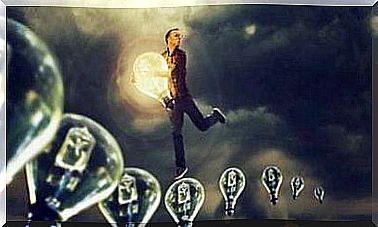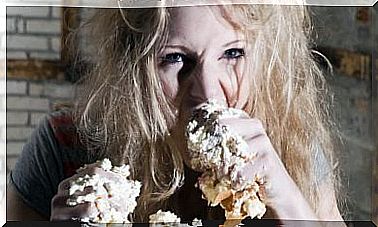Theories About Hunger: Why Do We Eat?

It’s noon and you’re hungry. You feel even hungrier as the minutes go by and have to eat now! However, you’re busy right now, so you can not. It is now four in the afternoon and you are not hungry anymore. How many times have you not heard phrases like “I’m not hungry anymore”? There are many theories about hunger that give us different answers to the question of why we eat.
The answer may seem simple: because you are hungry. But, is it really so? Partly yes, but why does hunger disappear so many times? When you eat your favorite meal, why do you eat more than you really need? “I’m not hungry anymore, but I love it.” And so you eat until you are stuffed.
In this article, we will address some popular theories about hunger that explain our eating behavior and provide an answer to the question above.
The theory with a point of origin
This theory holds that hunger is a lack of energy. So when you eat, you restore your optimal energy levels. This is known as an energy adjustment point.
According to this theory, a person eats until he or she feels full. At this point, the person stops eating because he or she has restored his or her point of origin. Eating has therefore fulfilled its function. The person will therefore not eat again until the body has got rid of enough energy for it to be below the point of origin.
This system consists of three components:
- Adjustment mechanism: Establishes the point of origin.
- Detector mechanism: Identifies any deviations from the point of origin.
- Mechanism of action: It is a mechanism that removes the deviations.

All systems of origin (Wenning, 1999) are negative feedback systems. The feedback that arises from changes in a certain direction creates a compensatory effect in the opposite direction. We can actually find these systems in mammals and their purpose is to maintain homeostasis.
If this theory was 100% true, you would have stopped eating when you reached the point of origin. But this is not always the case right?
Theories of hunger: Glucostatic origin point theory
In the middle of the 20th century, several researchers believed that people ate to maintain their blood sugar levels. This is the glucostatic origin point theory. In other words, you eat when your blood glucose levels drop and stop eating when they have regained their normal levels.
Theories of hunger: Lipostatic origin point theory
According to this theory, each person has an adjustment point for body fat. People therefore eat sheep to regain this point of origin.
Limitations with origin point theories
The first limitation of these theories is that they do not take into account the influence that comes from the taste of food, how one has been brought up and social factors.
This may be the case, for example, when you find your favorite food at a social event. Imagine that there is a table with your favorite food and another type of food that you do not like very much. You will probably not eat much of the food you do not like. You will definitely eat a lot of the food that you actually like, even when you feel full. In other words, it is possible to eat even when you are not hungry.
Lowe (1993) claimed that over 50% of all Americans have a large excess fat when they start eating. This fact also applies to people who have too much fat and continue to eat anyway. This point also shows that the theories of origin are not complete.
If these theories were accurate, man would not have survived to this day. Pinel, Assanad, and Lehman (2000) argued that “Theories of origin regarding hunger and eating are not in line with basic evolutionary pressures related to hunger and eating as currently believed.”
The authors explained that our ancestors need to eat a lot of food in case they would not find any food later. They therefore stored calories in the body in the form of fat. If the origin point theories were accurate, they would have stopped eating when the deviations had been restored. But if they had not had anything to eat, they would not have had any calorie reserves.

Positive incentive perspective
According to the theory of positive incentive, humans and other animals are normally not motivated to eat due to lack of energy, but due to the pleasure that arises when eating; also called positive incentive value (Booth, 1981).
This theory addresses the hypothesis that hunger comes from the historical pressures we have suffered from due to lack of food. So instead of a lack of energy, hunger is caused by the presence of appetizing food or the thought of it.
Your hunger levels depend on the interaction of various factors:
- Taste
- What you have learned about the effect of food
- The time that has passed since you had your last meal
- The type of food you are currently digesting in your intestines
- Whether there are people around you or if you eat alone
- Blood sugar levels
Theories about hunger: Not everything is as it seems
In this overview of our main theories about hunger, we have seen that the answer to the question of why we eat is not so simple. Something as common as eating is not so easy to explain. The reason for this is that we not only eat when we are hungry, but also because we like certain foods.
On the other hand, Jaime Silva (2007) emphasized that emotions and moods also affect food consumption. He says that “On the one hand, emotional states and moods can affect how we eat. On the other hand, food can modify emotions and moods. ”
How many times have you eaten more than necessary to relieve your anxiety? Or how many times have you stopped eating because of this? Hunger must be explored further.









